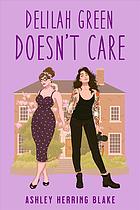
Mormon YA literature has come a long way with the publication of No Going Back. Many novels written for the Mormon audience are designed to be, first, faith-promoting. In No Going Back, we have a more realistic novel.
Paul, 15, comes out to his best friend, his bishop, and finally his mother. His life is complicated by the members of the Gay Straight Alliance at his school (who expect him to be true to himself as a gay teen), navigating the expectations of his church that he remain celibate, and dealing with a political campaign to limit gay rights, in which members of his congregation are actively participating.
There is much to admire in No Going Back, given its intended audience. There is frank discussion of teen sexual issues, a great portrayal of friendship when Paul’s friend Chad sticks by him after he comes out (despite pressure from some church members and peer pressure at school), and an honest examination of the pressures on family life that church members often go through. These types of issues are rarely seen in what is intended as popular fiction for a church audience. While they are common in mainstream YA literature, they are new in this market.
Some readers will be disappointed in Paul’s decision to put the church first. But it is an appropriate ending for the market for which No Going Back is intended. As a matter of full disclosure, I am a former Mormon who chose the same path as Paul for many years. So, while reading, I understood what is happening here, and why. But a huge issue for non-Mormon readers will be the total lack of explanation of the Mormon world. Church jargon, organization, and theology are presented in a way that will be clear to the intended reader, but will not be clear to others, since the author assumes reader familiarity. If not for the unexplained Mormon terminology, this book might have had a broader market for other conservative faiths.
So, what should librarians do with No Going Back? Just as we fight for LGBT YA books to be in our libraries, so that LGBT youth can find themselves and their lives on the shelves, we should consider material that suggests to youth another choice, so that those who decide to choose faith will also find themselves there. Libraries located in communities or states where there is a sizable Mormon population should consider this book.
Reviewed by, Dave Combe
EP Foster Library
Ventura, CA

